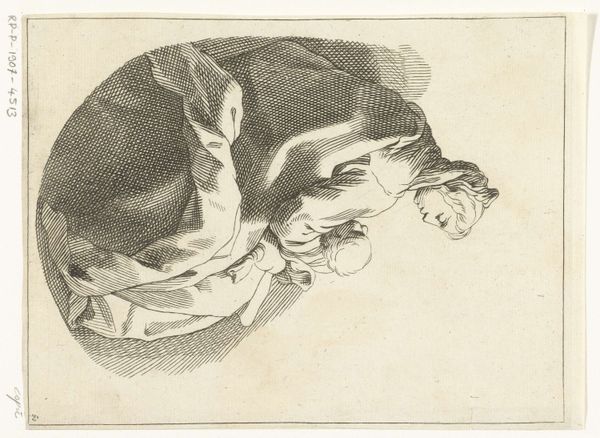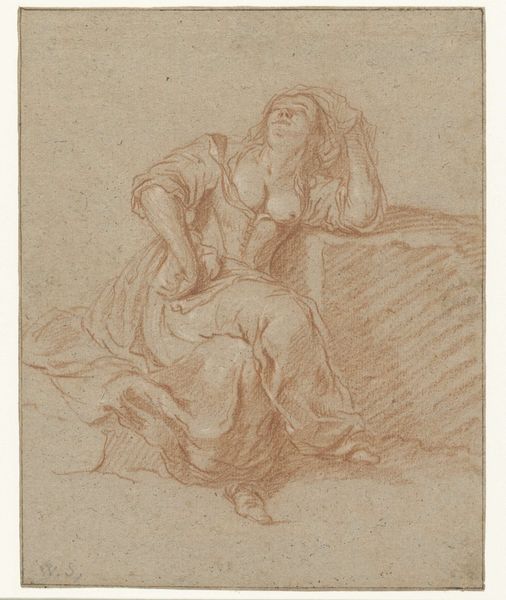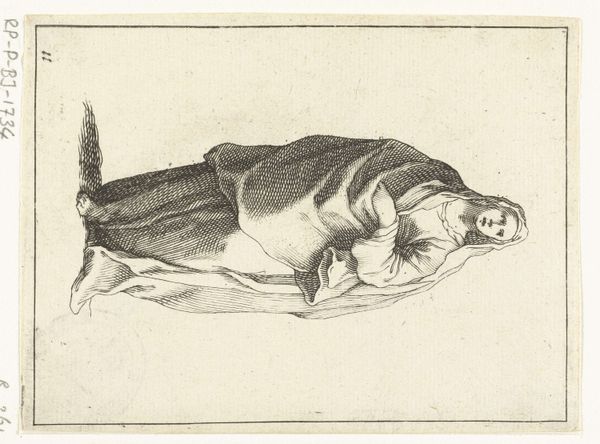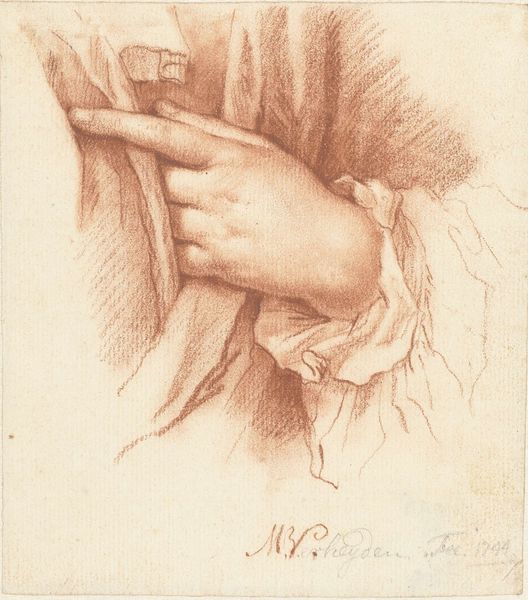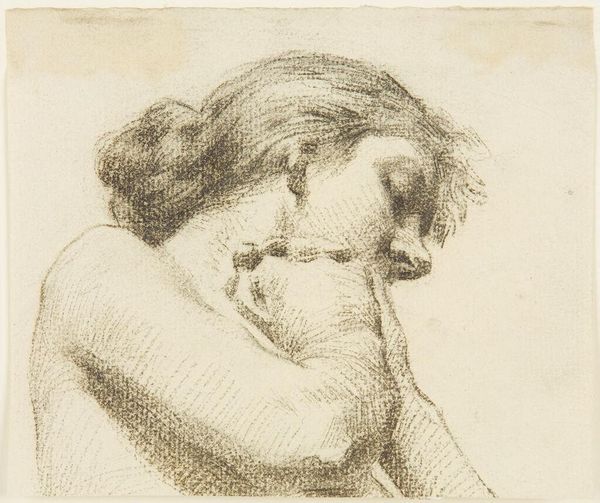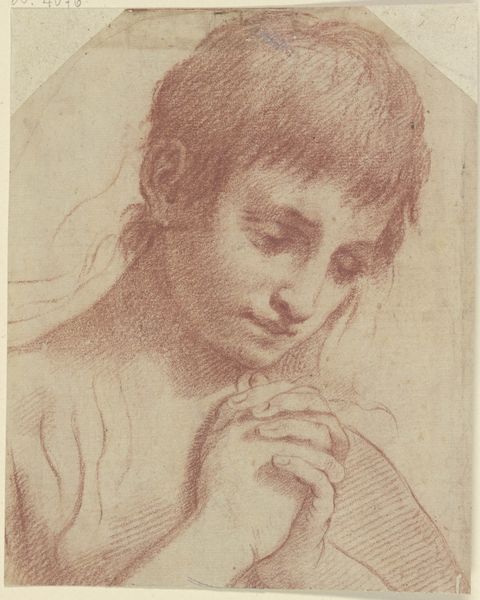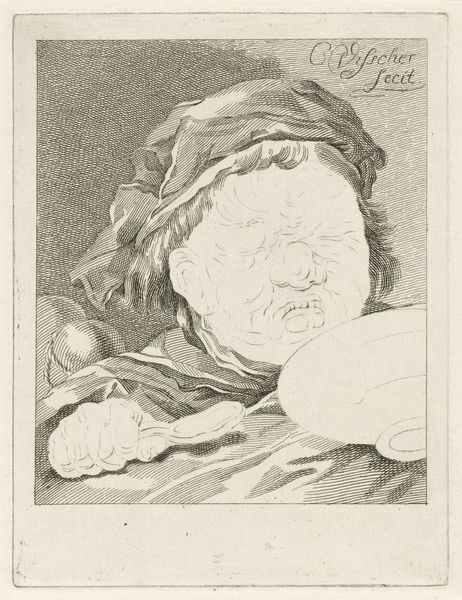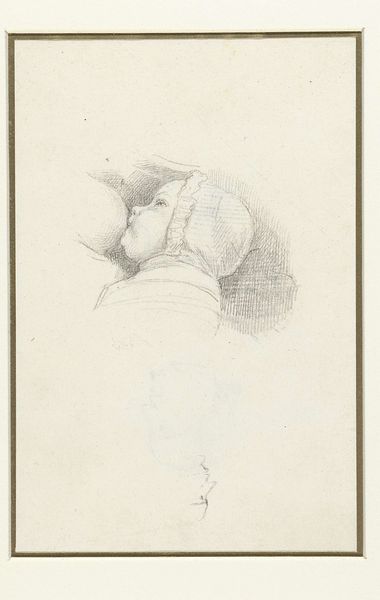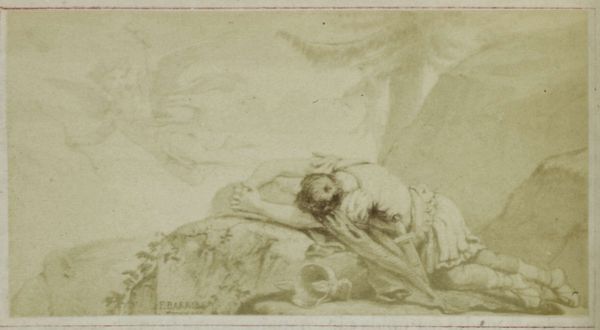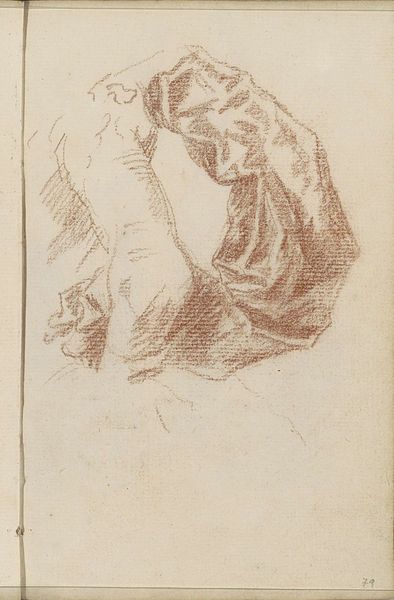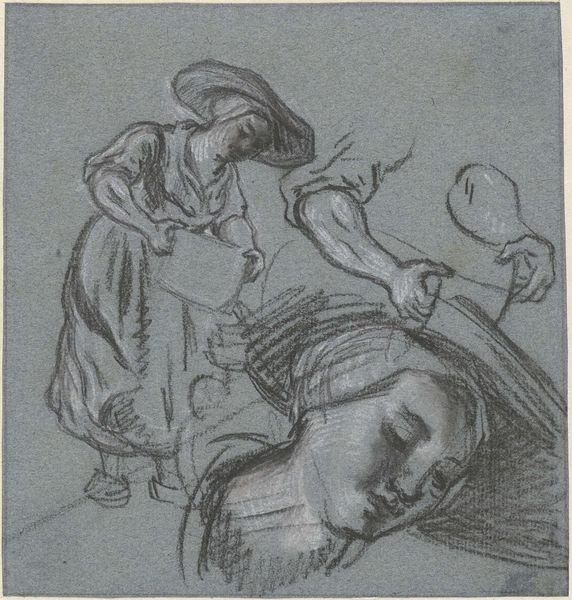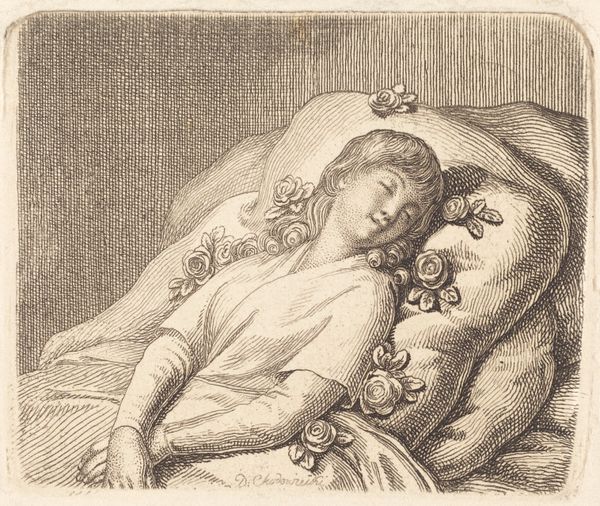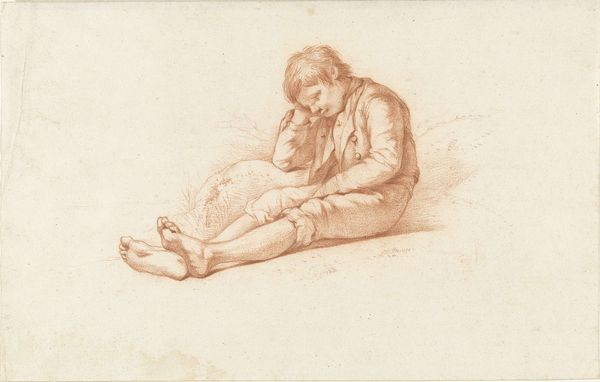
drawing, pencil
#
drawing
#
narrative-art
#
baroque
#
figuration
#
pencil drawing
#
pencil
#
history-painting
Dimensions: height 211 mm, width 163 mm
Copyright: Rijks Museum: Open Domain
Editor: Here we have Bernard Picart's drawing, "Maria Magdalena kust de voeten van Christus," dating from around 1683 to 1733. It's a delicate pencil drawing. I find it quite intimate, even vulnerable. What do you see in this piece, especially considering the time it was made? Curator: The Baroque era was a period of intense religious and political upheaval, and images like this one offered a powerful visual language for complex theological ideas. Consider the act of Mary Magdalene kissing Christ's feet. How do you see this act represented, and how does that portrayal engage with contemporary notions of gender and power dynamics? Editor: I see devotion, definitely. Her closed eyes and flowing hair suggest a complete surrender. But there's also an element of social transgression, isn't there? A woman, particularly one with Magdalene's history, humbling herself before a man in such a physical way… it's charged. Curator: Exactly. Picart invites us to contemplate the social codes surrounding religious ecstasy. How does Magdalene's display of emotion challenge established power structures of the era? Could it be interpreted as a proto-feminist act of rebellion, or is she reinforcing existing patriarchal norms? Think about her story: her identity shifts between penitent sinner, devoted follower, and even a potential leader in early Christian narratives. Editor: It’s a fascinating tension. She’s both submissive and assertive, perhaps reclaiming power through vulnerability. So, the drawing becomes a site where these competing narratives collide. Curator: Precisely. And thinking about visual art as a site for negotiating these conflicts gives us new tools to explore and perhaps question what seems like a simple depiction of faith. Editor: This really changes how I see the drawing. It’s not just a devotional image; it’s a complex statement about power, gender, and religious identity. Curator: Absolutely, it opens a dialogue. That’s the beauty of engaging with art history and its ongoing relevance.
Comments
No comments
Be the first to comment and join the conversation on the ultimate creative platform.
